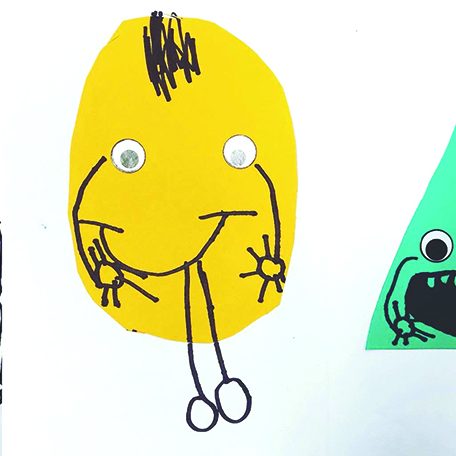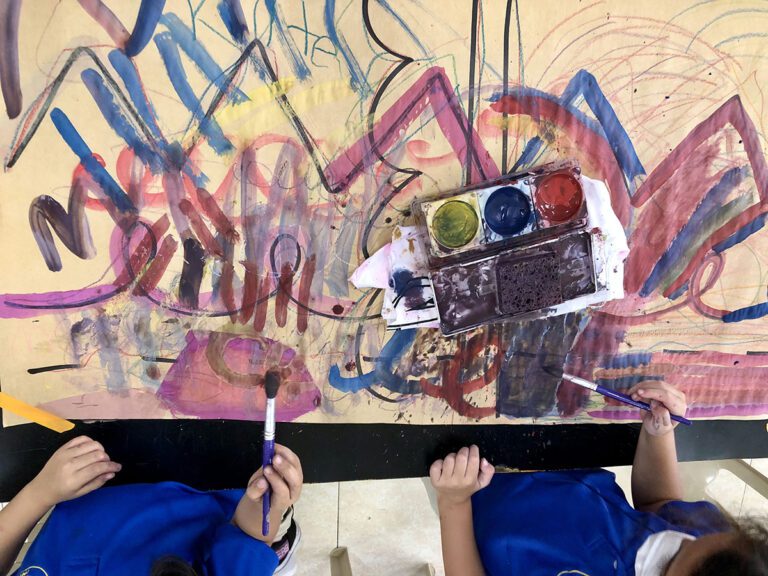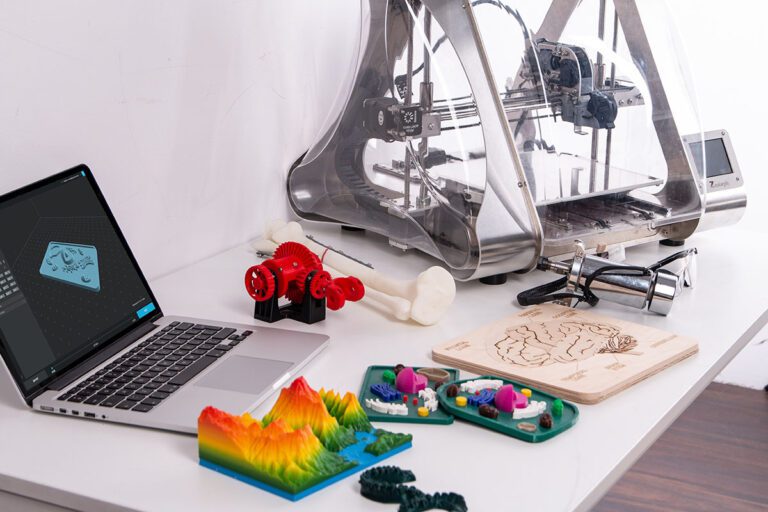This fall, many kindergarten and first grade students are attending in-person learning for the first time. After COVID isolation and digital preschool, your youngest artists may be experiencing a learning gap in their social and fine motor skills. This is the perfect opportunity to meet them in the moment with social-emotional learning and the elements of art. Introducing your kindergarteners to SEL practices will help them to learn about themselves and others. Using the elements of art to build foundational art education skills will prepare them for the art room and beyond.
For more resources on how to meet the moment with our kindergarteners, check out our YouTube mini-series, 1-2-3 A-R-T, where we give tips and tricks to bring your little artists’ fine motor skills up to speed.
What Are the Seven Elements of Art?
The seven elements are the building blocks used to create a work of art. Even your youngest students can identify lines, colors, and shapes in a composition without much instruction. The remainder of the elements includes form, value, space, and texture.
What Are the Five SEL Competencies?
SEL guides students to learn about themselves as individuals as well as their awareness of and interactions with others. The five widely accepted competencies of SEL are self-awareness, self-management, social awareness, relationship skills, and responsible decision-making. For a more in-depth look at the intersection of SEL and art education, check out The Art of Education University’s podcast, The Art of SEL.
Let’s explore how SEL and the elements of art pair together to form amazing art opportunities for our kindergarteners.
1. Responsible Decision-Making With Lines
Learning about the Abstract Expressionist artist, Jackson Pollock, is never a dull moment. Have your kindergarteners collaborate on a large-scale mural by painting large shapes of color. Painting with your smallest students may be daunting in and of itself—but handing a six-year-old a ketchup bottle filled with paint? This is where the magic (and messes) happen.
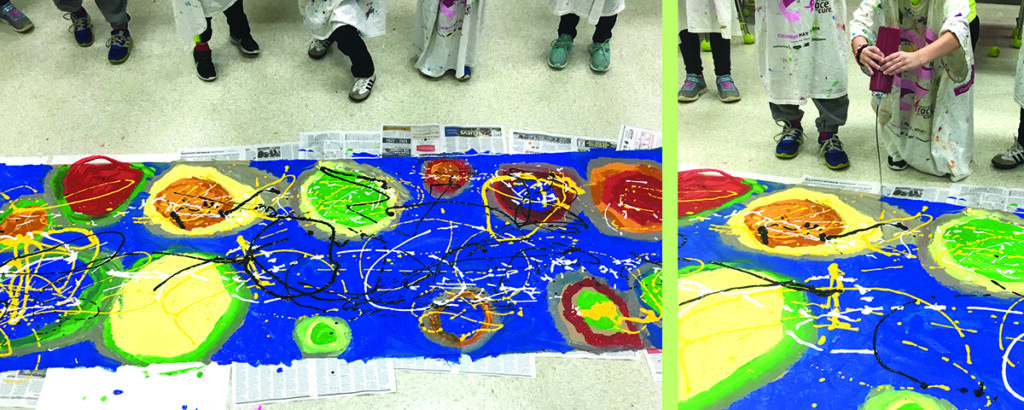
Discuss with students how they will use their whole bodies to fill the space with lines and squeeze the bottle of paint directly down onto the paper. Establish guidelines with students, such as not pointing the bottle at their new shoes or the students across from them. Reinforce that their decisions could lead to a giant mess. When accidents happen (which they will), it is essential to acknowledge our role in the mistake and apologize.
When everyone has had a chance to add large swooping lines of paint on the mural, have students identify the visible paths made by the lines. Guide a short talk on the energy the lines create. Lastly, recognize the responsible decision-making process that took place during artmaking.
2. Relationship Skills Through Shapes
Picture books are a great way to spark conversations about relationship skills. Tangled by Anne Miranda, and The Perfect Fit by Naomi Jones both use shape friends to explore this topic. Often when we think of relationships, we immediately think of friendships. However, in Tangled, individual shapes step up to help those in need and ultimately work together for the collective good. The Perfect Fit features a triangle that learns the unique skills and perspectives of its differently shaped peers.
Have students draw two different shapes on colored paper. They will cut out the shapes and glue them to a white base paper. Apply sticker eyes for instant personality. Draw other features with a permanent marker. Prompt students to consider how these shapes will interact with one another.
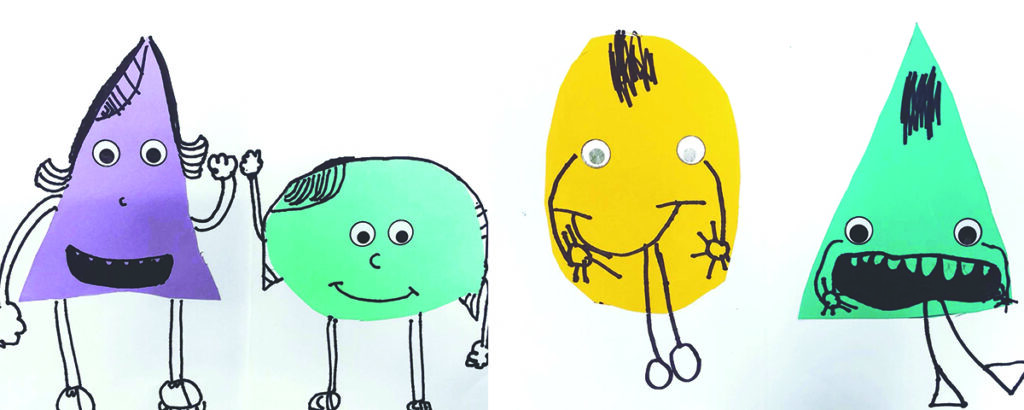
3. Self-Awareness and Form
Introducing students to the element of form through clay is not a new concept. For many kindergartners, creating a pinch pot is a rite of passage. But it doesn’t have to stop there—pinch pots can catapult students into a deeper lesson about self-awareness.
Lead a discussion about how different colors are associated with different feelings. Anger is often expressed with the color red. Yellow usually represents a sunny disposition. The conversation can give students an opportunity to be aware of how they are or wish they were feeling. Have students add color that reflects their current mood to their pinch pot.
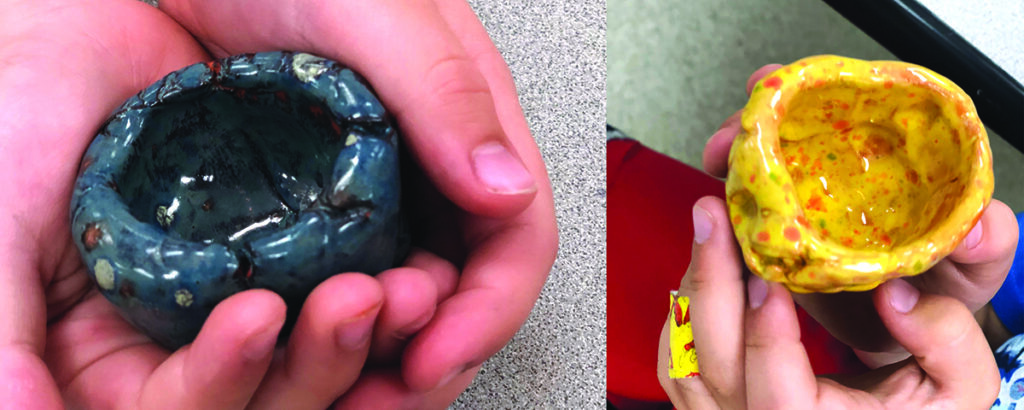
If you do not have access to a kiln or are not ready to fully explore clay, try Model Magic™. Color the modeling material with washable markers, and knead in the color prior to sculpting.
4. Social Awareness and Color
The picture book, Mixed: A Colorful Story introduces readers to the fundamentals of color mixing and the importance of recognizing the beauty in our differences. After reading the book, discuss how the characters become aware of the beauty in one another.
Provide students with primary color tempera paint. After painting a circle of each color, lead students through mixing the colors to create new hues. Don’t forget to add some white too! Each new color is used to add a circle to their page. Once the painting is dry, talk about how everyone has different faces, expressions, and feelings. Brainstorm what some of those faces, expressions, and feelings might look like. Have students add a unique face on each circle using a permanent marker and white colored pencil.
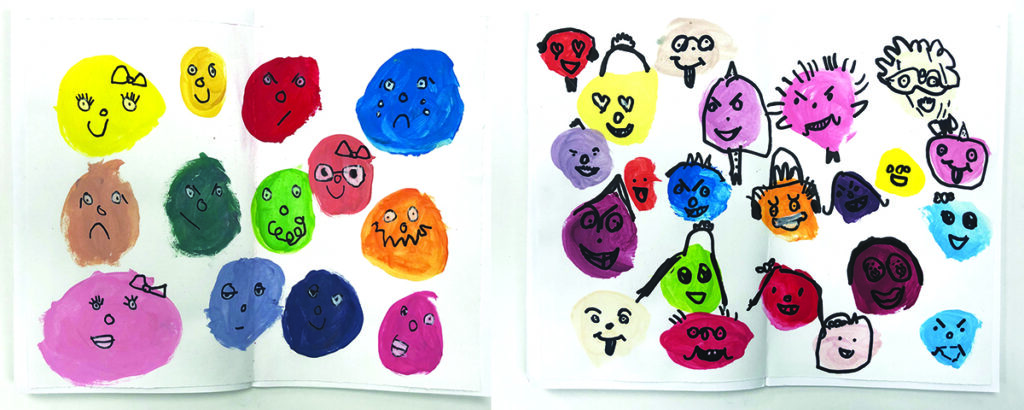
Are you looking for more artmaking experiences rooted in awareness and inspired by picture books? Check out 6 Picture Books to Prompt an Awareness of Self and Others.
5. Self-Management Through Value
All of us have strategies for processing our emotions, experiences, and frustrations. For many young students, this includes a special stuffed friend. This is also true for Trixie in Mo Willems’ books about Knuffle Bunny. This series can kick off discussions on managing our emotions and responses. For a real tearjerker, check out Knuffle Bunny Free, where Trixie learns to process her feelings in new ways.
The pages are made up of black and white photographs of real places with super-imposed illustrations. The gray-scale values of the backgrounds draw attention to the emotions of the drawn characters.
Prompt students to draw themselves and their favorite stuffed characters using simple shapes. The stuffed friend should be one that makes them feel comforted and strong. Use crayons to add color to the self-portrait. Cut out the figure and glue it to a black and white printed photo of a location within the school.
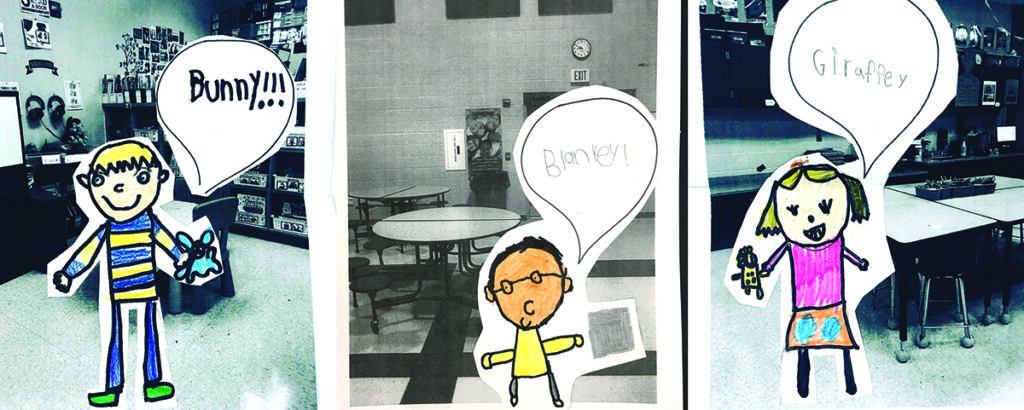
6. Relationship Skills With Texture
Relationships with those we love and respect are made up of small daily moments we make together. This is true for the characters in The Hello, Goodbye Window with their grandparents. Students will use simple shapes to portray themselves with two people they love and respect.
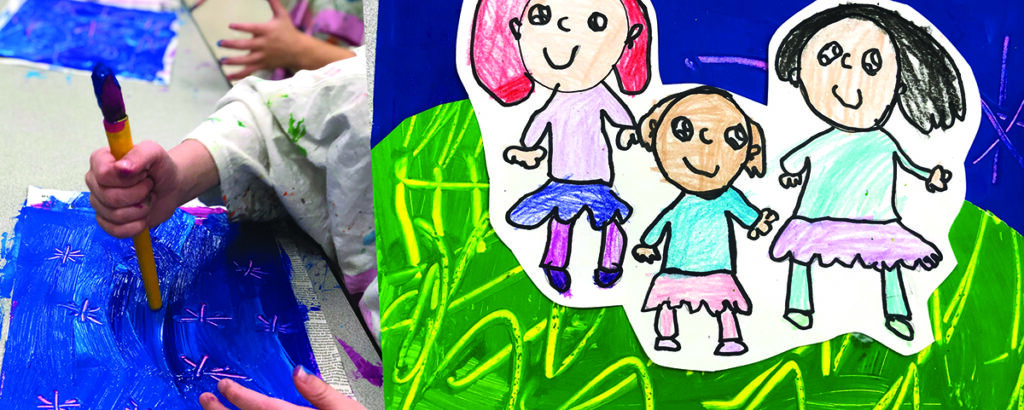
The illustrations in the book are created with layers of paint. To explore different textures, students layer a strip of paper with two colors of wet paint. Scratch textures into the damp paint to reveal the color below. For example, layer green over yellow and scratch short lines for grass. For a sky, start with magenta and layer dark blue on top, and scratch swirls and stars.
Students can add details to the background with oil pastel. Combine the textured background with the illustrated portrait. This will serve as a visual representation of an important relationship in the student’s life.
7. Self-Awareness Through Space
We most often think of self-awareness in relation to an individual’s experiences and feelings. However, this competency also includes one’s awareness of their surroundings. Exploring the element of space begins by encouraging students to notice what is going on around them. Point out how objects far away from them are smaller and items close up are larger.
Landscapes provide an opportunity to discuss our size in relation to massive mountains or broad fields. Engage in conversations about how our actions can impact these natural wonders. Students draw a series of stacked zigzag, bumpy, or rounded lines to create a range of mountains with hills in the foreground. As the lines go farther away, they should get smaller and closer together. As the lines come closer, they should get larger and more spread out. Color each shape formed between the lines with oil pastels.
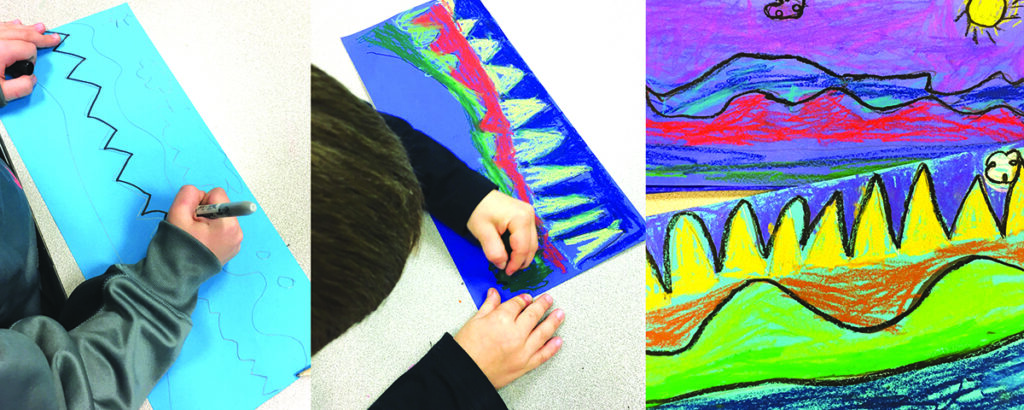
Make SEL a Priority.
Because of isolation and virtual preschool, Kindergarteners and first graders will need extra attention this year to get up to speed with their social and fine motor skills. Class is a naturally fun environment, making it the perfect content area to teach and reinforce valuable skills. Your newest students will be excited to learn about art supplies and techniques. You can thoughtfully integrate SEL competencies with the elements of art to do this without it being one more thing or starting over.
Consider how to spark conversations about awareness, management, relationships, and decision-making within your existing curriculum. Reevaluate the art projects and learning opportunities you already provide in terms of these five competencies. Kindergarteners are more than eager and undoubtedly capable of this critical learning if we make it a priority for their art education.
What SEL opportunities do you already provide for your students in the art room?
What one artmaking lesson could you modify to spark SEL engagement?
Magazine articles and podcasts are opinions of professional education contributors and do not necessarily represent the position of the Art of Education University (AOEU) or its academic offerings. Contributors use terms in the way they are most often talked about in the scope of their educational experiences.
